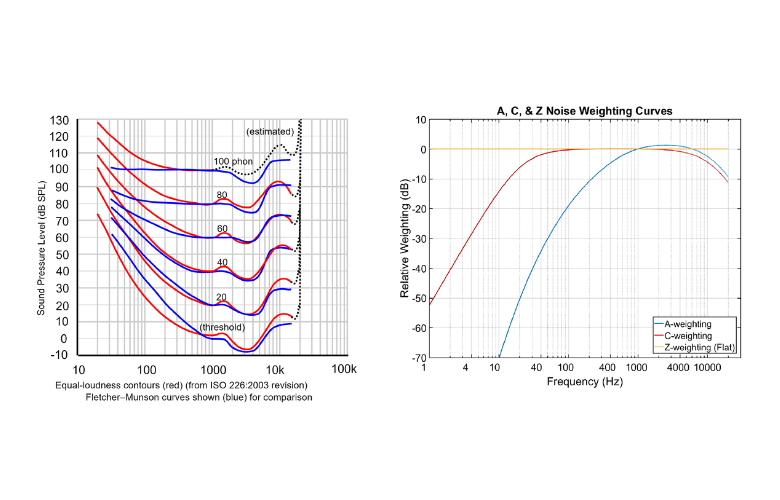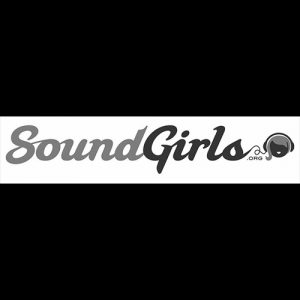
Noise regulation is a necessary part of our live events family getting along with the wider community. We want to put on great, big, all-encompassing shows, and our neighbours want to work, play and sleep without being disturbed. Some sort of compromise needs to be reached to keep the peace between us. This is where noise regulation comes in: it varies depending on the nature and location of the gig, but an agreement to keep to a certain average volume (more on that later, for the pedants, reading this) is usually a condition of the event’s licence.
Breaking that agreement can result in fines, but even more importantly it can lead to the licence not being issued the next time, or even revoked from the venue. If you have any respect for the wider live community you’ll do your bit to stick to the noise limits. Even if you don’t, someone else will probably turn you down or switch you off anyway.
There are several different approaches to setting limits. It starts with consulting your country or region’s guidelines on noise at work (because it is a workplace, for us technicians and bar staff, security, etc.), and adapting these sensibly, for example offering free ear plugs to staff and guests if recommended limits will be exceeded, rather than making it unfeasibly quiet. There don’t tend to be government guides specifically for live performances, so licence providers deal with applications on a case-by-case basis. Third-party noise consultants, colloquially known as the noise police, can help with this aspect of planning as explained by UK consultancy Vanguardia’s Roly Oliver in this guide (https://www.eventbrite.co.uk/blog/noise-management-for-events-ds00/). Factors like the location, time of day, length, and nature of the event, as well as how often it’s due to occur, contribute to whether a licence is granted and what volume is agreed. For example, a one-off community event in a park on a Saturday afternoon might be given more leeway than a rave every Wednesday night in the middle of a residential neighbourhood.
The limits are usually based on how loud the sound from the event is at the nearest residence (or sometimes it’s really the house with the person rich enough to retain a lawyer for noise complaints), so both modelling and real-time measurements concentrate on this area. When the PA system is first set up, music is played through it and measured at that residence. Seeing as it will be heard by the general public, it is recommended that the song doesn’t have swearing in it, but for some reason, Rage Against the Machine is a perennial favourite. The licence issuer will usually do the off-site measurements but noise consultants are often hired to do their own measuring alongside this, for verification and as a backup for the promoter if there are any disagreements. The consultants or venue staff also measure within the venue, usually at FoH for convenience. The music is turned up until it hits the off-site limit, and whatever the measurement is at FoH at that point becomes the maximum level for mixing (again, for any pedants, we’ll come back to this). There might be several off-site recording points of interest, so depending on how many microphones are available they’re either recorded all at once, or the process is repeated for each location. If there are multiple sound systems at the event, for example at a festival, each one will be measured in turn. This process is called noise propagation and can only take place at a previously agreed time, to minimise disruption to the community. When setting up one-off events, the PA takes priority over other aspects of audio in order to be ready in time for propagation.
Of course, what is meant by ‘volume’ and even ‘average’ isn’t completely straightforward. As sound engineers, we most often think of volume in terms of the sound pressure level (SPL), measured in decibels (dB). SPL measurements are usually taken through filters that account for how humans perceive this pressure, as we are more sensitive to some frequencies (centering around human speech) than others. These filters are known as A, B, C, or Z weighted (https://www.engineeringtoolbox.com/decibel-d_59.html). A-weighted measurements are roughly the inverse of equal loudness contours (see figure 1) at lower SPLs, so if we were to hear sound that we perceived to be equally loud across the spectrum at a lower volume, the meter would register it as equally loud as well. The C-weighted filter is flat across much more of the spectrum. As the sound gets louder, the equal loudness contours start to resemble C-weighted filters more closely. B-weighted measurements are in between A and C, and Z-weighted ones are completely flat, but these two are almost never used for live sound. Luckily for audio engineers, most SPL limits are set in terms of A-weighting, so there is more room to play with lower and higher frequencies than if it were C-weighted. However, low frequencies travel further than higher ones, so they can still cause issues at off-site monitoring locations.
Depending on the budget for noise monitoring, the equipment may or may not be sophisticated enough to record which frequencies are the loudest. A lot of venues have simple handheld sound meters that give you one overall SPL reading so there’s not much that can be done about it, but bigger gigs and festivals use software that includes a real-time analyzer (RTA) so one can see which frequencies are causing issues. The engineer can then decide whether notching those frequencies down will be worth a corresponding increase in overall volume, or whether it’s better to leave them in and mix at a lower level.
Whatever the limits end up being, they’ll be described in terms of a time window, for example, “95dB(A) Leq15’ ”. The Leq (technically LAT for the pedants) is the mean value of sound energy over that time, on a rolling basis. So the example limit is an average of 95dB, A-weighted, over a continuous 15-minute window, measured throughout the show. You might also see reference to “fast” or “slow” measurements. These are settings for sound meters that are traditionally used for regulating noise at work, for example on factory floors, so are only averaging over a few seconds. They aren’t that useful when applied to something as dynamic as a live performance, but if the event organiser has based their noise regulation plan directly on occupational noise documentation or they only have a basic handheld device, that might be the parameters that you’re left with. If you’re given a proper Leq value you can get away with a much louder performance by interspersing songs with chatting from the artist or alternating louder songs with quieter ones. Even the changeover can help bring the measurements down. As long as it averages out ok, and you don’t go above any peak limits that are set (these tend to be much higher than the average limit and measured as C-weighted), you’re fine.
Cool story. If you’re given a low limit (and admittedly they can be upsettingly low, especially at outdoor festivals in the middle of cities), you have two options:
Unless you’re with a very rich headline act who doesn’t care about the gig renewing their licence, and you have a big stick to keep the system engineer away from their gear, there is no third option just to be loud because you’re cool. No matter how much you turn it up, the system engineer will turn it down further along the signal path and all you’ll achieve is making your mix sound worse. If you really push it (or there isn’t a separate system engineer) you might get switched off completely. Some small venues even have an automated ducker or kill switch which will kick in as soon as you go over the set limit. There are plenty of tricks out there to get more out of your mix at lower volumes. Jon Burton, university lecturer and front-of-house engineer for EDM act the Prodigy, is famous for making their shows sound massive while sticking within noise limits. In fact, he wrote his master’s thesis on one of his approaches (https://core.ac.uk/download/pdf/83934715.pdf).
Due to the large fines and reputations at stake, there is often quite a lot of distrust between audio engineers and noise consultants, but we are on the same team. They are not just killjoys who don’t like music; by monitoring at FoH and letting the engineer know whether they’re within the limit in real time they’re actually making the process easier for everyone. By asking engineers to stick within the agreed limits, they are protecting the event from fines and complaints and ensuring it can take place again next time. It is in everyone’s interest to work together to leave both the audience and the wider community feeling positive about live events by reaching a compromise while delivering the best show possible.
Further resources:
Speaker manufacturer d&b offers free noise prediction software for their systems:
https://www.dbaudio.com/global/en/products/software/noizcalc/
Guidance on noise at live events from the UK Goverment’s Health and Safety Executive: https://www.hse.gov.uk/event-safety/noise.htm
Live DMA working group’s inventory of various sound regulations across the region: https://www.live-dma.eu/sound-regulations-in-europe/
AES’s white paper Understanding and managing sound exposure and noise pollution at outdoor events: https://www.aes.org/technical/documents/AESTD1007_1_20_05.pdf
ProSoundWeb article based on this white paper and other research, outlining the what has informed the World Health Organisation’s stance on noise levels and potential future global standards, and how to approach mixing within these limits: https://www.prosoundweb.com/live-event-sound-levels-rising-above-the-insidious-undercurrent-of-aural-incapacitance/


The mission of SoundGirls.org is to inspire and empower the next generation of women in audio. Our mission is to create a supportive community for women in audio and music production, providing the tools, knowledge, and support to further their careers. SoundGirls.Org was formed in 2013 by veteran live sound engineers Karrie Keyes and Michelle Sabolchick Pettinato and operates under the Fiscal Sponsorship of The California Women’s Music Festival, a 501(c)3 non-profit organization. In 2012, Karrie and Michelle participated in the “Women of Professional Concert Sound” panel at the AES Conference in San Francisco. The panel was hosted by the Women’s Audio Mission (WAM) and moderated by WAM founder Terri Winston. Terri brought together five women working in live and broadcast audio. The groundbreaking panel (which also included Jeri Palumbo, Claudia Engelhart and Deanne Franklin), provided young women and men a glimpse into life on the road, tips and advice, and a Q & A with the panelists. More importantly though, was how incredibly powerful the experience was for the panelists. We had all been in the business for 20 years or more, yet most of us had never met before that day and within minutes we bonded like long-lost sisters. We were struck by how similar our experiences, work ethics, and passions were and wondered why our paths had never crossed and how our careers would have been different had we been there to support each other through the years. Each of us are strong on our own, but together we were even stronger and a powerful force. We were empowered. Each of us had been asked hundreds of times in our careers: Are there other women doing sound? How did you get into sound? How would a young woman go about getting into sound? Through creating SoundGirls.Org, we hope to establish a place for women working in professional audio to come for support and advice, to share our success and failures, our joys and frustrations, and for empowerment and inspiration.
Read Full Profile© 2021 TheatreArtLife. All rights reserved.

Thank you so much for reading, but you have now reached your free article limit for this month.
Our contributors are currently writing more articles for you to enjoy.
To keep reading, all you have to do is become a subscriber and then you can read unlimited articles anytime.
Your investment will help us continue to ignite connections across the globe in live entertainment and build this community for industry professionals.